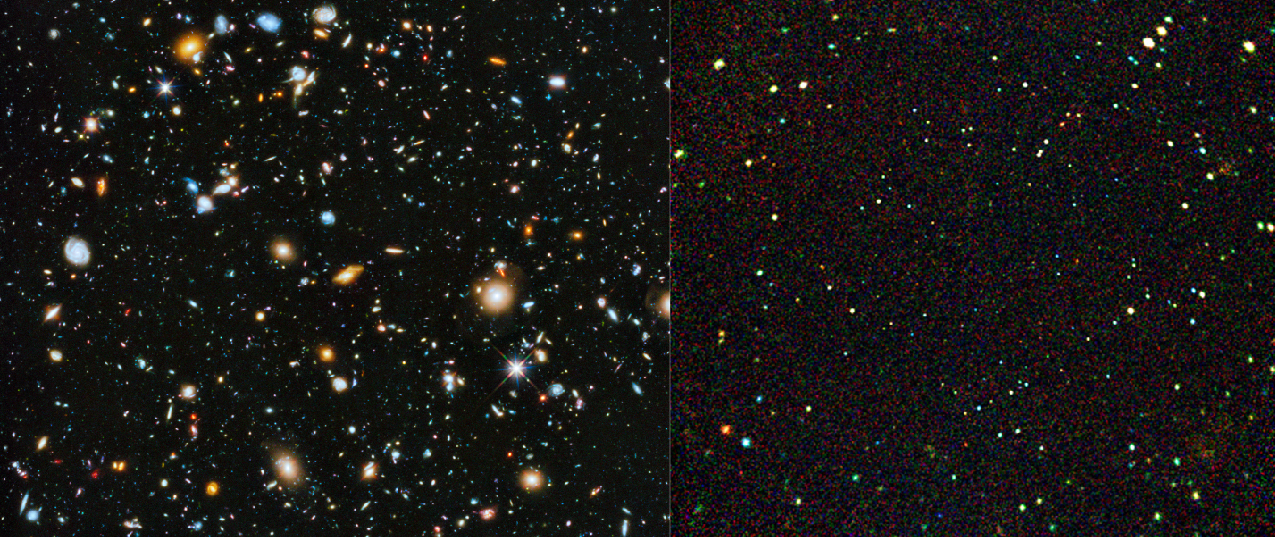Chapter 27 Active Galaxies, Quasars, and Supermassive Black Holes
27.0 Thinking Ahead

During the first half of the twentieth century, astronomers viewed the universe of galaxies as a mostly peaceful place. They assumed that galaxies formed billions of years ago and then evolved slowly as the populations of stars within them formed, aged, and died. That placid picture completely changed in the last few decades of the twentieth century.
You were encouraged to watch this video in chapter 26, but it is worth watching again. This textbook repeats itself a lots in these chapters on galaxies. Here is a link to the video about the Hubble Deep Field photo or as they call it “The most important image ever taken”. Direct link: https://youtu.be/mcBV-cXVWFw
Today, astronomers can see that the universe is often shaped by violent events, including cataclysmic explosions of supernovae, collisions of whole galaxies, and the tremendous outpouring of energy as matter interacts in the environment surrounding very massive black holes. The key event that began to change our view of the universe was the discovery of a new class of objects: quasars.

